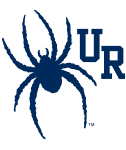Autism spectrum disorder (ASD) prevalence has increased dramatically in the United States in the past decade. A recent study from JAMA found that from 2011 to 2022, ASD diagnosis rates increased by 175%. This surge in cases emphasizes the urgency of understanding not only the condition itself, but also the challenges families may face after receiving a diagnosis. This summer I worked as a research intern under Dr. Magdalena Janecka, an Associate Professor at the Department of Child and Adolescent Psychiatry at NYU Langone. My research was entirely computer-based, using RStudio to analyze how the odds of service utilization change for families with children that have autism based on factors such as race/ethnicity and the Area Deprivation Index (socioeconomic ranking by zipcode).
When choosing my summer internships, I wanted to invest in work that I could lean on passion for when challenges inevitably came. Last summer, that passion brought me to the Pollock lab where I was excited about contributing to meaningful breast cancer-related research. This summer, some of my other experiences led me toward autism research at NYU Langone. Here are some moments that shaped that path:
Where it All Began: VCU Children’s Hospital
In the Spring of 2024, I began volunteering as a Recreational Therapist at the VCU Children’s Hospital, where I sang, danced, read to, and played with pediatric patients who have severe cognitive disabilities. That semester I also shadowed Dr. Lubin, a Developmental Behavioral Specialist at the VCU Children’s Hospital who diagnoses children with autism. I was able to sit in on vulnerable conversations where families expressed their frustration with constantly being on the waitlist for screening, diagnoses, and treatment services for their children.
Becoming the Investigator
Seeing that this was a community with disproportionate access to essential services, I joined Dr. Nguyen’s Health Equity Lab at MIT to investigate for myself, via statistical research, the social determinants of health and their correlation with autistic child patient visit rates to Child Development clinics in Virginia. Through both my research and the personal testimonies I witnessed from families of children with autism, I felt encouraged to continue my advocacy for these children and their caregivers by starting an organization at U of R called Kickin’ It Coalition.
Kickin’ It Coalition
Kickin’ It Coalition offers free soccer training for children with autism in the greater Richmond area. Since we started in the Fall of 2024, we have been able to host 16 soccer clinics!
On clinic days, I hear the coaches chant “T.D., T.D.,” as Ty scores the tie-breaker, see Richard pridefully grinning when he beats his coach in a foot-race, and watch Rhapsody screaming with delight when awarded her first trophy. In those moments, I’m reminded how much these kids can thrive when they are given the same opportunities as their peers.
We are taught that the scientific method process begins with a good question, but for many people, there are personal stories behind that question that give it meaning. To undergraduates who may not know where to begin in the huge, and sometimes daunting, world of research, I would suggest starting with your own experiences, getting involved in the Richmond community, and letting that guide you.
Lauren Shin
Class of 2027
Biochemistry & Molecular Biology Major
Grosvenor LP, Croen LA, Lynch FL, et al. Autism Diagnosis Among US Children and Adults, 2011-2022. JAMA Netw Open. 2024;7(10):e2442218. doi:10.1001/jamanetworkopen.2024.42218
Shaw KA, Williams S, Patrick ME, et al. Prevalence and Early Identification of Autism Spectrum Disorder Among Children Aged 4 and 8 Years — Autism and Developmental Disabilities Monitoring Network, 16 Sites, United States, 2022. MMWR Surveill Summ 2025;74(No. SS-2):1–22. DOI: http://dx.doi.org/10.15585/mmwr.ss7402a1

Recent Comments